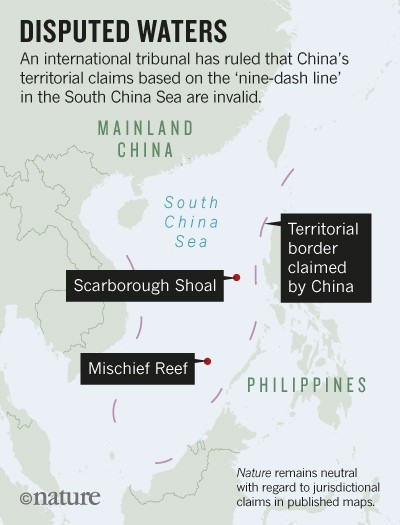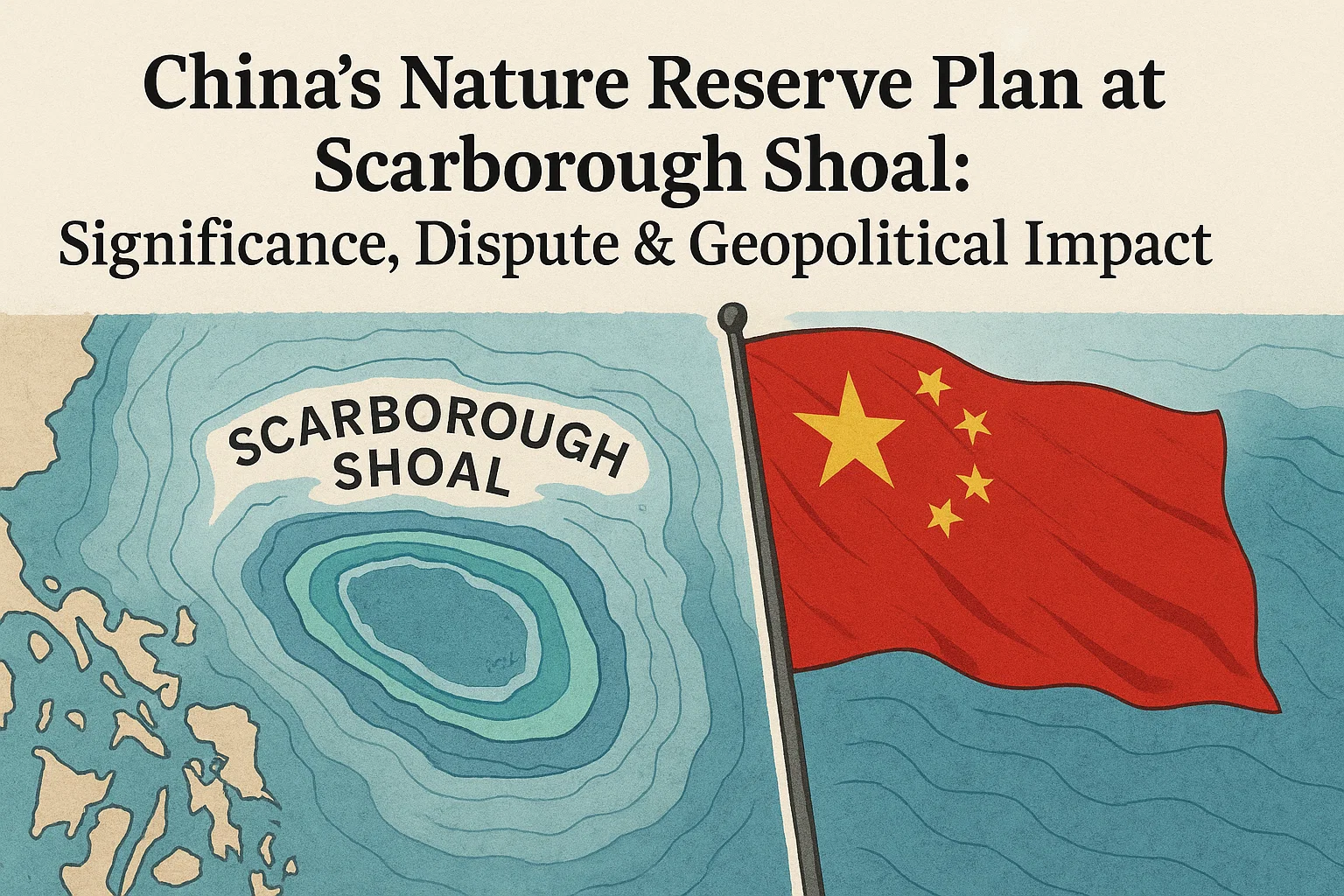China’s NR Plan at Scarborough Shoal: Significance, Dispute & Geopolitical Impact
Learn about China’s new nature reserve plan at Scarborough Shoal, why the Philippines is opposing it, and how the South China Sea dispute impacts geopolitics, trade, resources, and regional security.
China’s Nature Reserve Announcement at Scarborough Shoal
China’s announcement of establishing a national nature reserve at Scarborough Shoal (Huangyan Island) has reignited geopolitical tensions in the South China Sea. The Philippines has condemned the move, arguing that it is a strategic cover to reinforce China’s territorial control over a disputed maritime feature. The development represents yet another flashpoint in an already volatile region where legal, environmental, and military concerns collide.
About Scarborough Shoal
Scarborough Shoal is a triangular-shaped coral atoll in the South China Sea, highly valued for its strategic and ecological significance. Located about 220 km west of Luzon, it falls within the Philippines’ Exclusive Economic Zone (EEZ) under the United Nations Convention on the Law of the Sea (UNCLOS). Despite this, China claims the shoal based on its controversial “nine-dash line,” asserting historical rights over much of the South China Sea.
The shoal is not only rich in marine biodiversity but also strategically important. Control over Scarborough Shoal strengthens maritime surveillance and enhances naval posture in the region. For the Philippines, it is a key fishing ground essential to local livelihoods.

What Makes the South China Sea So Significant?
1. Economic and Trade Arteries
The South China Sea is one of the world’s busiest maritime corridors, with more than $3 trillion worth of annual trade passing through its waters. It serves as the primary route connecting East Asia with the Middle East, Europe, and beyond. Any disruption here could send shockwaves across global supply chains and shipping networks.
2. Abundant Natural Resources
Geological surveys indicate that the seabed may hold significant reserves of oil and natural gas, making it a crucial energy frontier for rapidly growing Asian economies. Additionally, the South China Sea is home to some of the most productive fishing grounds, sustaining food security for millions of people in Southeast Asia.
3. A Major Geopolitical Flashpoint
Competing claims among China, the Philippines, Vietnam, Malaysia, Brunei, and Taiwan have turned the region into a geopolitical hotspot. China’s construction of artificial islands and militarisation of reefs has intensified tensions. Meanwhile, the United States conducts Freedom of Navigation Operations (FONOPs) to counter what it sees as China’s excessive maritime claims. This makes the South China Sea a central arena for great-power competition.
Why Is the South China Sea a Bone of Contention?
1. Unresolved Sovereignty Claims
The core dispute stems from overlapping territorial claims. Although the 2016 Permanent Court of Arbitration rejected China’s “historic rights” argument and upheld the Philippines’ EEZ rights around Scarborough Shoal, China refused to recognise the ruling, leaving the conflict unresolved.
2. Clash Between UNCLOS and China’s Historic Claims
UNCLOS legally defines maritime zones, but China’s “nine-dash line” overlaps with the EEZs of several Southeast Asian states. This conflict between international law and China’s historical narrative creates legal ambiguity over resource exploitation and navigation rights.
3. Resource Competition and Environmental Harm
Competition over fisheries and potential hydrocarbon reserves often leads to clashes between fishing fleets and coast guard vessels. Environmental degradation has worsened as activities such as dredging, destructive fishing, and island-building have damaged coral reefs and ecosystems. The Scarborough Shoal dispute illustrates both nations blaming each other for environmental destruction.
4. Militarisation and Security Dilemmas
China’s fortification of artificial islands and increased regional naval presence by multiple countries have created a classic security dilemma. Defensive measures taken by one nation appear offensive to others, leading to an escalating cycle of military buildup. The risk of miscalculation or accidental conflict is steadily increasing.
Conclusion
China’s nature reserve proposal for Scarborough Shoal may be presented as an environmental initiative, but regional actors view it as a strategic move to consolidate control. As legal disputes, resource competition, and geopolitical rivalry intensify, the South China Sea will continue to shape the balance of power in the Indo-Pacific.
Subscribe to our Youtube Channel for more Valuable Content – TheStudyias
Download the App to Subscribe to our Courses – Thestudyias
The Source’s Authority and Ownership of the Article is Claimed By THE STUDY IAS BY MANIKANT SINGH



